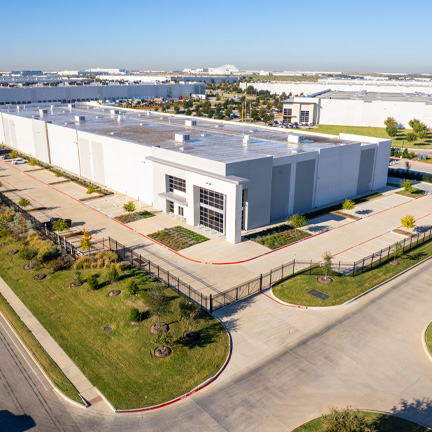Press

CenterPoint Properties Acquires Newly Constructed Fort Worth Distribution Facility
Search Site
Back to Menu

“Another year of tremendous demand and escalating rent rates for highly functional industrial facilities and properties in port-proximate and in-fill submarkets well into 2023. Users are increasingly looking to lock in rents sooner rather than later to avoid getting priced out of the real estate they need to stay competitive.”
- Nate Rexroth, Executive Vice President of Asset Management
One of the most significant current commercial real estate stories is the industrial sector’s rise to the top of the pack, along with multifamily, as one of the two most desired asset types in demand by investors.
The pandemic created setbacks in the commercial real estate market in 2020 and 2021 and there are still lingering challenges, such as supply chain and labor supply issues. However, the outlook for 2022 remains very positive and reflects the confluence of many factors which have significantly increased the demand for industrial real estate since the beginning of the pandemic and for the foreseeable future.
This is, in part, is due to the pent-up demand that began as the result of companies putting real estate plans on pause at the beginning of 2020. Now—two years later—in some core markets, warehouse/distribution, manufacturing and technology companies cannot find enough industrial space to accommodate their current and future business plans.
Several of the user types driving increased industrial property demand are e-commerce companies and their suppliers, food and beverage companies (including refrigerated and frozen food products), pharmaceutical and medical-related companies and packaging and consumer products companies.
Many companies have been implementing a “plus one” facility strategy as inventory control has become a primary focus for industrial users. Therefore, increased warehouse footprints—to accommodate additional inventory due to the recent and continuing supply chain disruptions and as an additional service to customers—has been an emerging trend.
In order to obtain some additional perspectives on industrial real estate in 2022-2023, I spoke with several of the most active industrial developers for their predictions for the next 12-24 months:
Nate Rexroth – Executive Vice President, Asset Management, CenterPoint Properties
“The log jams experienced in 2021 at top ports like L.A./Long Beach and N.Y./N.J. have not abated since the Biden Administration announced steps to increase efficiency in December. Ships continue to queue in record numbers on both coasts. Worker shortages and rising fuel costs promise to continue spiking transportation costs and the prices of goods and raw materials for the foreseeable future. Construction starts promise to continue to be more challenging and costlier, too, in 2022. These factors all point to another year of tremendous demand and escalating rent rates for highly functional industrial facilities and properties in port-proximate and in-fill submarkets well into 2023. Users are increasingly looking to lock-in rents sooner rather than later to avoid getting priced out of the real estate they need to stay competitive.”
About CenterPoint Properties
CenterPoint is an industrial real estate company made up of dedicated thinkers, innovators and leaders with the creativity and know-how to tackle the industry’s toughest challenges. And it’s those kinds of problems — the delicate, the complex, the seemingly impossible — that we relish most. Because with an agile team, substantial access to capital and industry-leading expertise, those are exactly the kinds of problems we’re built to solve. For more information on CenterPoint Properties, follow us on LinkedIn. For all media inquiries, including requests for interviews with CenterPoint executives, please contact media@centerpoint.com or 630.586.8285.
For CenterPoint Asset Management inquiries, please contact:
Subscribe
Microsite Request